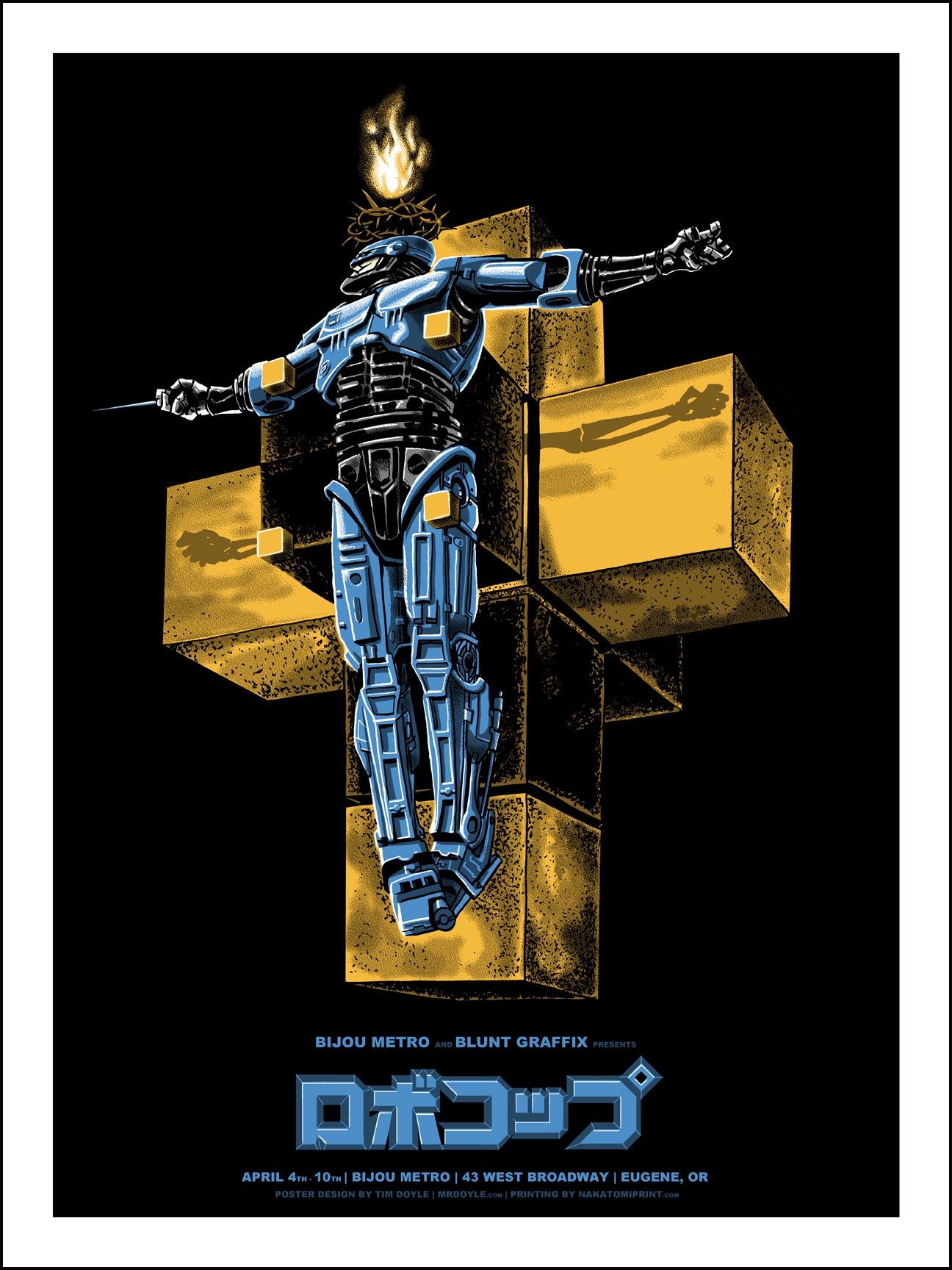RoboCop (1987) is the Good Soldier Švejk – or, better yet, as a colleague suggested to me, he’s Amelia Bedelia. Both Amelia and Švejk misunderstand the instructions they receive from authorities in such a way that they’ve understood too much – ostensibly without understanding anything at all. In other words, both Amelia and Švejk hear the unconscious contradictions latent in any command, contradictions which destabilize authority in the first place. Amelia reveals to us the absurdity of domestic propriety, while Švejk exposes the idiocy of militarism. Both do this not by critiquing the systems that produce them, but by taking the systemic norms implicit in conventional language so seriously that the contradictions animating each normative structure (the domestic and military scenes, respectively) get disastrously foregrounded rather than being allowed to operate effectively in silence. This isn’t passive resistance at all. Instead, it’s a kind of hyperactive and savage mimesis, a Chaplinesque endeavor to perform, which nevertheless undoes the very conditions of performance, causing a fundamental breakdown in the system.
 In RoboCop, after being brutally murdered by criminal Clarence Boddicker and his gang in the line of duty, police officer Alex Murphy is resurrected as a cyborg by Omni Consumer Products (OCP) and sold back to the Detroit police department. He is initially the undead avatar of state-sanctioned violence. The cyborg is bound by three directives: to serve the public trust, to protect the innocent, and to uphold the law. However, when the cyborg randomly encounters one of his murderers, he starts to seek out biographical information about its human component Murphy. After tracking down Clarence in a cocaine factory (while seeking to fulfill his directives), the cyborg has its attention directed toward OCP executive Dick Jones, who secretly maintains a working relationship with Boddicker. When the cyborg seeks to mete out justice, Jones makes explicit its hidden fourth directive: the cyborg cannot take action against OCP executives (justice: “I’d buy that for a dollar!”). As such, we see the cyborg – created by OCP as a supplement to the disciplinary state apparatus – fall into a material contradiction.
In RoboCop, after being brutally murdered by criminal Clarence Boddicker and his gang in the line of duty, police officer Alex Murphy is resurrected as a cyborg by Omni Consumer Products (OCP) and sold back to the Detroit police department. He is initially the undead avatar of state-sanctioned violence. The cyborg is bound by three directives: to serve the public trust, to protect the innocent, and to uphold the law. However, when the cyborg randomly encounters one of his murderers, he starts to seek out biographical information about its human component Murphy. After tracking down Clarence in a cocaine factory (while seeking to fulfill his directives), the cyborg has its attention directed toward OCP executive Dick Jones, who secretly maintains a working relationship with Boddicker. When the cyborg seeks to mete out justice, Jones makes explicit its hidden fourth directive: the cyborg cannot take action against OCP executives (justice: “I’d buy that for a dollar!”). As such, we see the cyborg – created by OCP as a supplement to the disciplinary state apparatus – fall into a material contradiction.
On the one hand, it is directed by its first three imperatives. These imperatives direct it toward the OCP corporate oligarchy that presides over the normalized state of criminality that obtains in this allegorical Detroit. On the other hand, “OCP runs the cops,” and RoboCop’s prime directive prevents it from acting against the biggest crime of all – not Jones’s internal corporate machinations, but OCP’s oligarchic control over the state apparatus. RoboCop can only act against OCP with formal sanction by OCP, hence why he cannot kill Jones (and literally “fire” him, as Saint Verhoeven so gleefully enjoys depicting) until the OCP CEO fires him first (“thank you”). It is no surprise, then, that the cyborg receives biographical traces of the human component Murphy as a consolation prize for its inability to effect the terms of its initial commission. In this Detroit, getting a human face supposedly makes up for existing in the gnostic conditions of late capitalism. “Somewhere, there is a crime happening” – indeed, there is. It forms the condition of possibility for your existence, but there isn’t anything you can do about it.